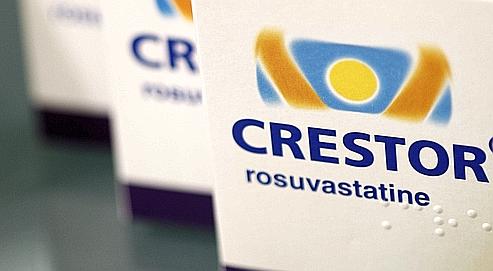Statins – the most commonly prescribed of cholesterol-modifying drugs – work by inhibiting an enzyme (known as HMG-coA reductase) responsible for the manufacture of cholesterol in the liver. However, that enzyme is also responsible for the production of something clled coenzyme Q10, which plays a role in energy production in the body. Some people have speculated that at least some of the side-effects of statins are related to their capacity to deplete the body of coenzyme Q10. It stands to reason then that drugs that are more potent inhibitors of HMG-coA reductase will be more effective at lowering both cholesterol and coenzyme Q10.
Now, it seems, there is some evidence that supports this idea. A group of US-based researchers trawled through data available from the Food and Drugs Administration’s (FDA) ‘Adverse Events Reporting System’ [1]. Specifically, the researchers were looking to quantify the muscle-related side effects for individual statins. The researchers looked at data from a six-year period (2005-2011) during which there were about 148,000 reports of muscle-related problems related to statin-taking. It should be perhaps borne in mind that the real number of adverse events are likely to be much higher in the real world. It’s a reality that a significant chunk of adverse events go unrecognised or unreported.
What this recent research showed was that, generally speaking, the more ‘potent’ a statin, the more likely individuals were to have muscle-related side-effects. The worst statin in terms of side-effects was rosuvastatin (Crestor). The next most problematic statin was atorvastatin (Lipitor), followed by simvastatin (Zocor), pravastatin (Pravachol), and lovastatin (Mevachor).
One of authors of the study, Professor Beatrice Golomb, makes the point here that more potent statins do not necessarily bring better clinical outcomes. The suggestion, therefore, is that more potent statins do not have significant benefits over less potent ones, and that the fact that they are more likely to give rise to side-effects means they should be prescribed with care. Professor Golomb is quoted as saying: “These findings underscore that stronger statins bear higher risk – and should be used with greater caution and circumspection.”
It’s a message I fear will fall on deaf ears. The current vogue is for doctors to be convinced that cholesterol lowering is inherently good and that, generally, the lower the cholesterol, the better. This almost inevitably pushes prescribing habits towards favouring of the more potent statins. This latest evidence suggests any drift in this direction may well be a retrograde step.
References:
1: Hoffman KB, et al. A Survey of the FDA’s AERS Database Regarding Muscle and Tendon Adverse Events Linked to the Statin Drug Class. PLoS One. 2012;7(8):e42866. Epub 2012 Aug 22.
